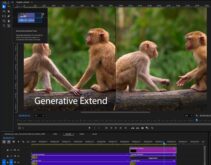Screencams are a wonderful tool for demonstrating software operation. In many cases, producing them can almost be a real-time event—you capture and narrate simultaneously, import the result into Camtasia Studio, add titles and such, export the finished file, and move on to the next project. However, when you’re producing tutorials for a client, or otherwise seeking a more polished look and feel, you may have to take a different approach.
Over the last 2 years, I’ve created about 50 screencams for clients, websites such as EventDV.net and StreamingMedia.com, and my own Critical Skills for Streaming Producers DVD. There is no one right way to produce these tutorials, but the tools and procedures described here provide what I feel is a good blend of precision, production efficiency, and output quality.
High-Level Workflow
To set up the rest of this article, I’ll start by describing my high-level workflow, then discuss each component in detail. Briefly, I script everything beforehand and narrate separately, typically recording the audio with Adobe Audition (formerly available as part of the Adobe Production Studio suite, but now sold as a stand-alone application). I’ve tried recording and narrating at the same time, but typically can’t get the quality that I need for clients or even for my own projects. When working with voice-over talent, I complete the project with a scratch vocal in my own voice, get approvals from the client, and integrate the voice over as the last stage.
When capturing screencams in Windows, I use Camtasia Studio 5; on the Mac, I use Snapz Pro X. In either case, I import the resulting file into Premiere Pro for editing and integrating with the narration. After editing, I export a file from Premiere Pro using the Apple Animation codec to render to final format in On2 Flix Pro when producing Flash VP6 files, or Sorenson Squeeze or Rhozet Carbon Coder for H.264.
In this article, I’ll describe planning for, creating, and editing the screencam. In a follow-up article titled “Compressing Screencams,” I’ll analyze which codec does the best job with screencam and discuss the optimal encoding parameters. That’s the high-level view; now let’s start with some project planning.
Project Planning
Whether you’re working for yourself or for a client, the first configuration item to nail down is the output resolution of the screencam. For my projects, this has ranged from 800×600 to 1024×768, with a stop at 1024×713, which assumes 55 pixels for the Flash player toolbar and a total screen resolution of 1024×768.
I don’t like windows smaller than 800×600, since this usually requires either massive scaling to fit the application into the window—which makes screen text hard to read—or panning and zooming around the window to show program operation, which is distracting and can produce compression artifacts. I assume that most target viewers have 1280×1024 resolution displays, so an output resolution of 1024×768 should be fine. At this resolution, you should be able to produce very good quality at a combined audio/video data rate of 400Kbps, which should be accessible to most corporate and home viewers.
The next configuration item is your capture resolution, which can be different from your output target. For example, when I’m outputting at 800×600, I still capture at 1024×768, since it’s impossible to show many applications running at lower resolutions. For reasons I just mentioned, my goal during editing is to display the captured video at 100% resolution within the 800×600 output window as much as possible, while minimizing panning and zooming.
I always capture at 15 fps. When working in Camtasia, the default capture format is a .camrec file, which captures metadata information and allows Camtasia Studio to apply the automatic SmartFocus effect. However, Premiere Pro can’t import .camrec files, so if you’re capturing to edit in Premiere Pro, change the preference to .avi in the Recorder’s Options dialog (Tools > Options).
Note that if you’ve captured to .camrec format by mistake, you can quickly convert the file to .avi by right-clicking the file and choosing Extract. If, for some reason, you have to edit the file first in Camtasia Studio, export a QuickTime file using the Apple Animation codec, which is the codec used by Snapz Pro X.
 Streaming Learning Center Where Streaming Professionals Learn to Excel
Streaming Learning Center Where Streaming Professionals Learn to Excel








